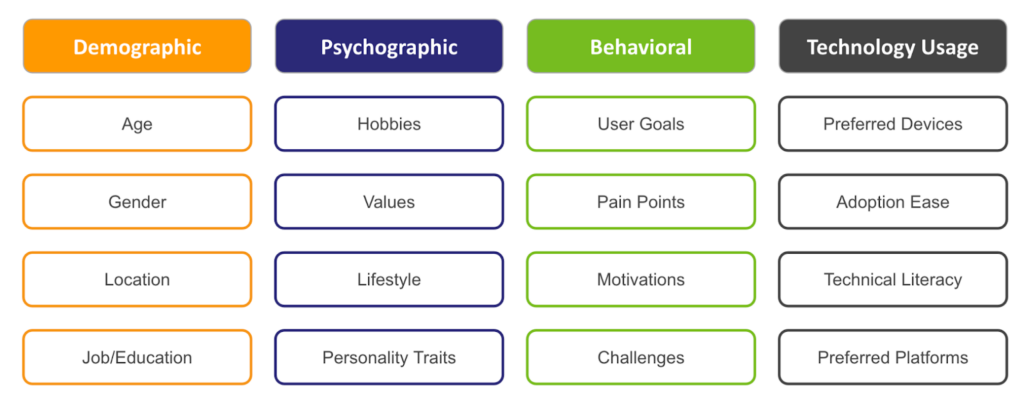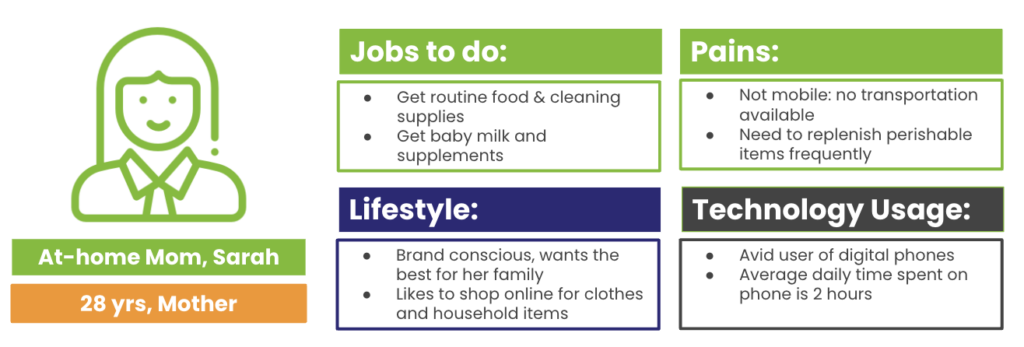User Personas for Customer-Centric Products

In the world of product development, success hinges on understanding your users. The "discover" phase is where you lay the foundation for a customer-centric product by delving into user research. One of the most powerful tools at your disposal during this phase is the creation of user personas. In this post, we'll explore the art of crafting user personas and how they pave the way for customer-centric products.
Understanding the Essence of User Personas
Before we dive into creating user personas, let's grasp the essence of what they are and why they matter. User personas are fictional representations of your ideal customers, based on real data and insights. They help you humanize your target audience and make informed decisions throughout the product development journey.
User personas typically include the following information:

You may not necessarily need to define your personas using all the data points mentioned above. The selection of specific features for the final persona should be guided by the product's context and the effectiveness of certain features in distinguishing between user types.
By defining exactly who your target users are, you and your team clearly outline who the product is for. Any feature prioritization issues or user experience queries down the road can be redirected to these user personas to quickly decide what this user may or may not prefer.
"A well-crafted persona is the compass that guides every decision in creating products that resonate with real people."
- Kim Goodwin
Let's consider a scenario
Imagine you are tasked with prioritizing feature development for Netflix where your two options are to either build a feature which shows live content or improve the content discovery flow on tablets. In this situation, merely stating that we're catering to someone who enjoys watching movies online can be rather vague and insufficient for informed choices on which content is better to add. User personas can provide insights into your audience’s interests and motivations, serving as a reference point for better decision-making.
Meet Sam, our first persona. He comes under Netflix’s primary target audience, you have to prioritize creating value and convenience for him.

Fig 1. User persona example - primary persona for Netflix
Meet Annie, a user persona Netflix is not targeting. While Annie may still be a user for Netflix, creating value for Annie is not the priority here.

Fig 2. User persona example - unimportant persona for Netflix
Keeping these two profiles in mind with the details of who they are and what their preferences are, your job of prioritizing the feature build becomes very easy. Sam will benefit more from the content discovery on tablets since he is always looking for good content and uses tablets frequently. On the other hand, the live streaming feature may be more relevant for Annie, but doesn’t seem like a priority for Sam.
Of course you would like to pair this with further user research to validate the preferences of your personas and accomplish your feature prioritization task. This example demonstrates how personas can provide the details and clarity essential for decision-making.
(please note that this is a fictional scenario and does not represent Netflix’s actual strategy)
The Craft of Persona Creation
Your user personas will be a blend of research-derived insights and your product's strategic preferences for defining their target audience.
Your initial user research will reveal patterns of similarities and differences between the people you interview. These patterns could be based on shared experiences, similar pain points, similar purchasing power, etc. Divide your users into these distinct segments based on their unique characteristics, and build personas for each of these segments.
Again, let's demonstrate this with an example. You are trying to understand potential users of a grocery delivery service and are interviewing people for this purpose. Within the 35 interviews you conducted, the following segments standout naturally. These segments are distinct from one another in terms of the jobs they need to perform, their pain points, their lifestyles, and their needs.

Fig 3. Segments resulting from user research
You may want to dig deeper into the profile of your choice and find out more about them to define a reasonably detailed persona. Suppose your company decides they want to solve the grocery delivery problem for the stay-at-home mothers first. You’d want to know more about them than what we currently have. Further research may reveal that this segment does not have access to transport, is usually busy with house chores and looking after dependents, frequently needs items like food supplies and baby milk, is tech savvy and owns a mobile phone which they frequently use, among other details. This is a good base to start building a persona which may look like the following:

Fig 4. User persona for a grocery delivery service
Is this information enough? It depends on your strategy and situation. For example, knowing whether they have access to a credit card is really important in this case as we need to plan how they’ll pay for the groceries so we can go ahead and add that information. Knowing which car they own may not be as relevant for now so we can leave that information out.
Putting Personas to Work
Once your personas are created, it's time to put them to work. Personas can be used for product decisions, marketing strategies, and user testing.
To inform feature prioritization and design choices, ask questions like, "How would Sarah react to this feature?" or "Does this align with Sarah's tech-savvy preferences?".
"User personas transform data into stories, helping us empathize with the people we're designing for." - Whitney Quesenbery
Tailor your marketing messages to resonate with specific personas. Craft content that addresses their pain points and aspirations. When conducting user testing, recruit participants who closely match your personas. This ensures that feedback aligns with your target audience.
Remember that user personas are not static; they should evolve as your product and user base grows and changes. Regularly update personas based on new data and feedback to keep them relevant and effective in guiding your customer-centric approach.





